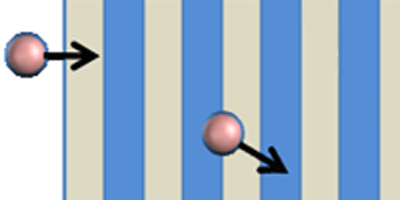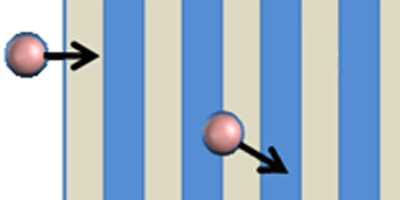Nanoparticle Sifting
Fabricating nanoparticles en masse is an imperfect science: some particles come out badly shaped for a given application. Researchers therefore need techniques that can quickly sort through a large number of particles and separate them according to size. In a paper appearing in Physical Review E, Rui Zhang and Joel Koplik at City College in New York have calculated the effectiveness of performing one such type of sorting that utilizes nanopatterned surfaces.
Some sorting techniques separate distinct particles in a moving fluid by forcing them to follow different trajectories because of a size- or chemical-dependent force. Zhang and Koplik consider how this could work for particles in water flowing through a long and wide channel with a specially patterned surface. In their model, the atoms in the top surface of the channel exert a repulsive force on the particles and water molecules, while the bottom surface is patterned with alternating repulsive and attractive stripes.
The team shows that when the particle-laden flow is initially directed at an oblique angle to the stripe direction, the oscillating potential provides an asymmetric background field which acts to deflect the particles away from the forcing direction. The origin of the effect is that the attractive stripes suppress the component of the particle motion out of the stripes, which alters the direction of motion. Since the deflection angle depends on the strength of the interaction it is sensitive to the nature of the particles, and varies with their size.
In addition to considering how various parameters affect this sorting mechanism, Zhang and Koplik explore the differences between stripes that exert a short-range, van der Waals force or a long-range Coulomb force on the flowing particles. – Jessica Thomas





